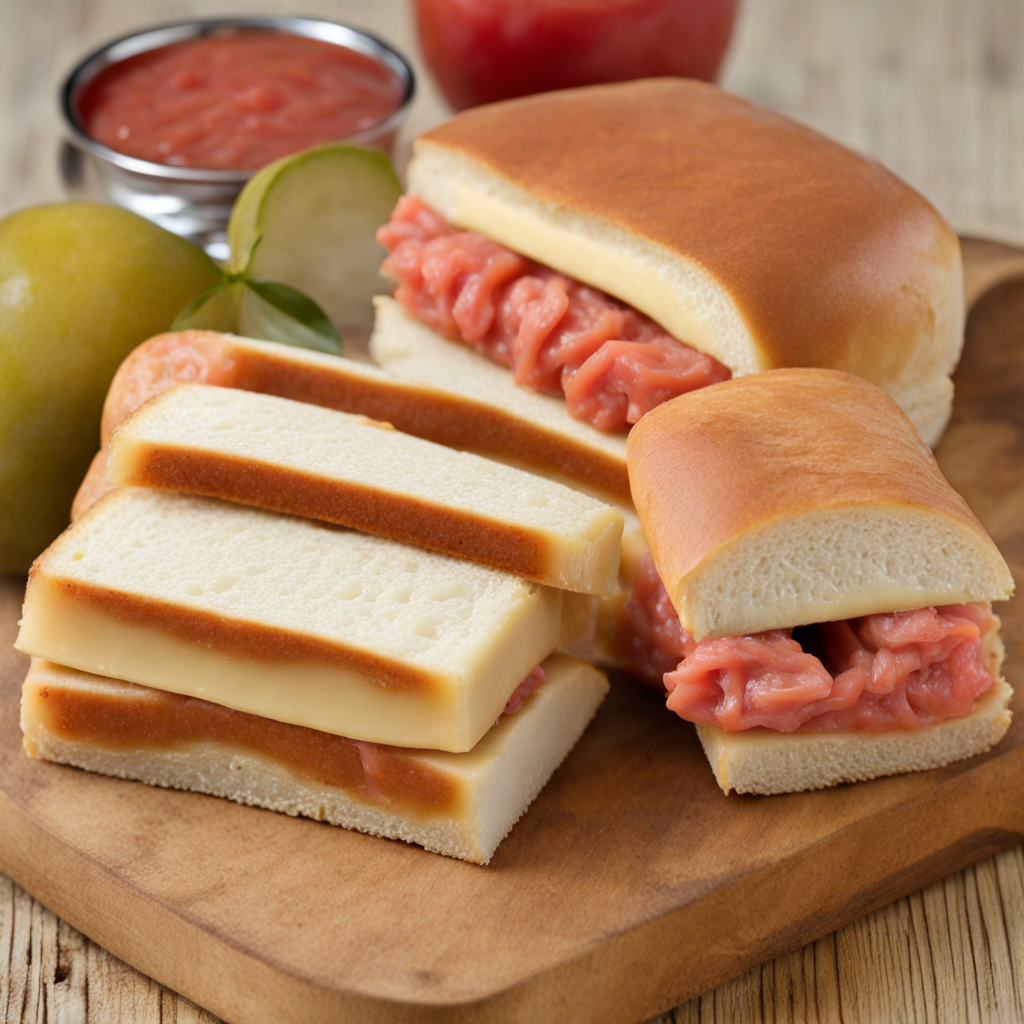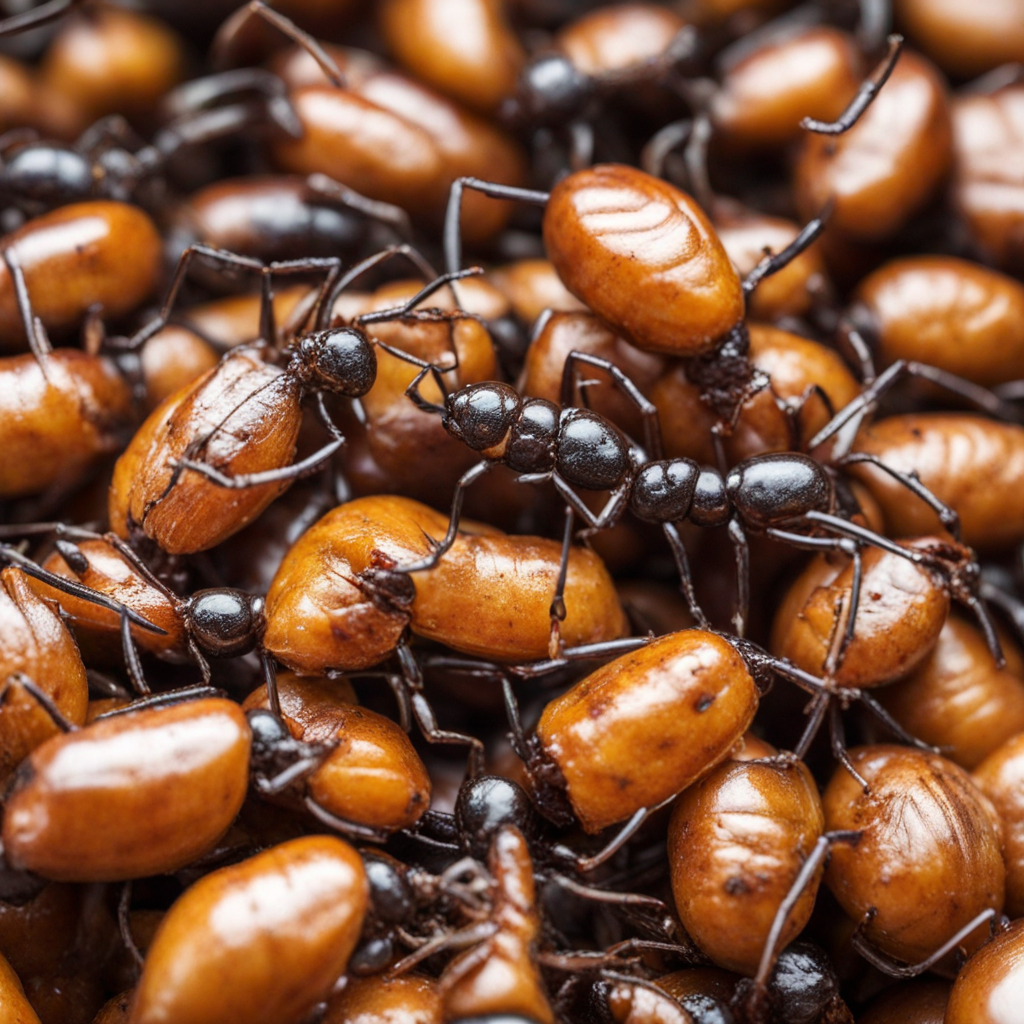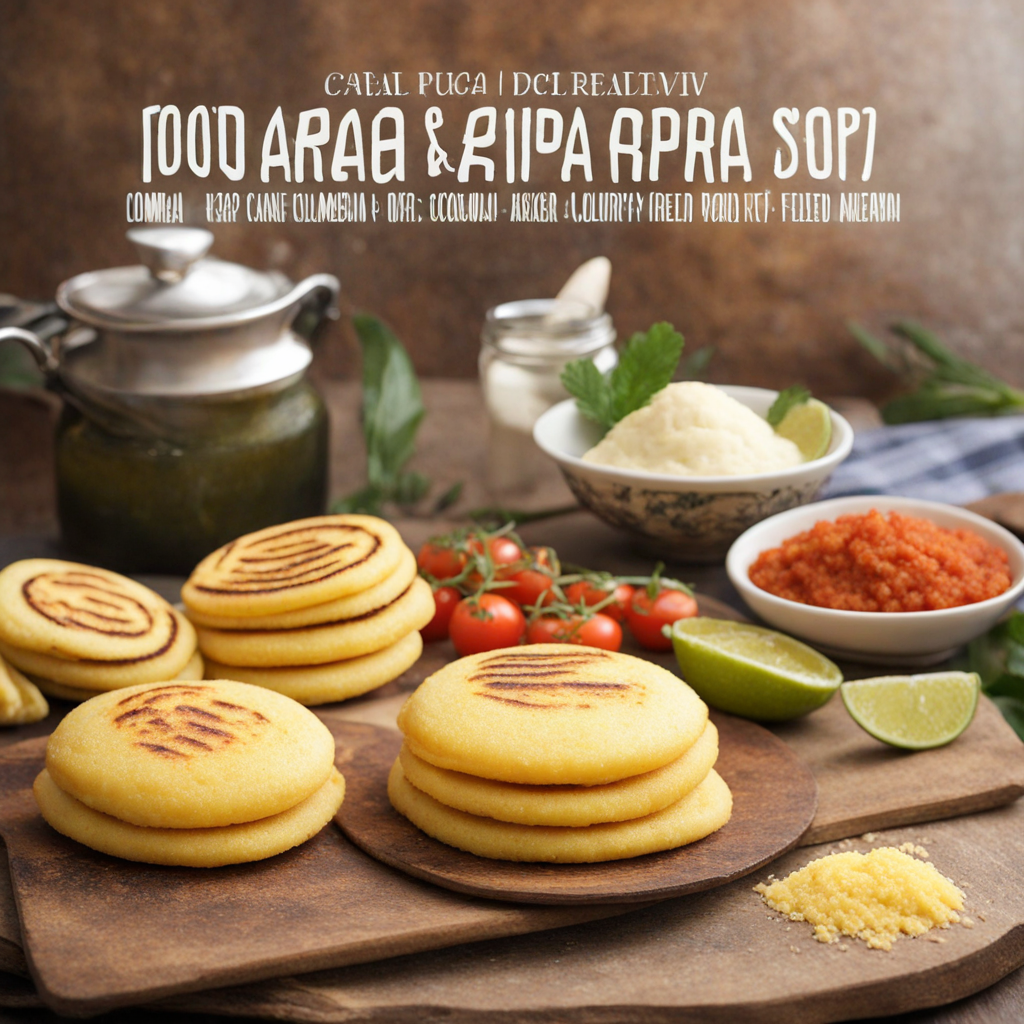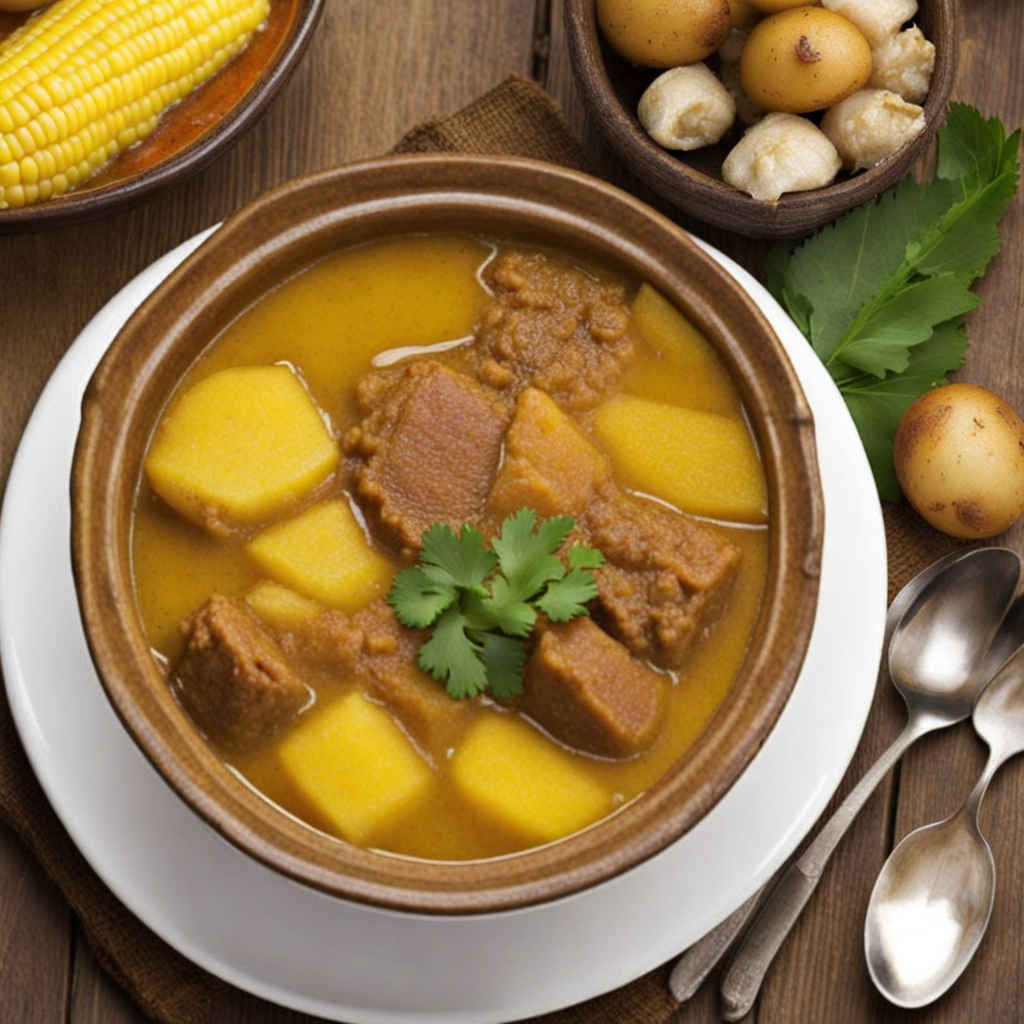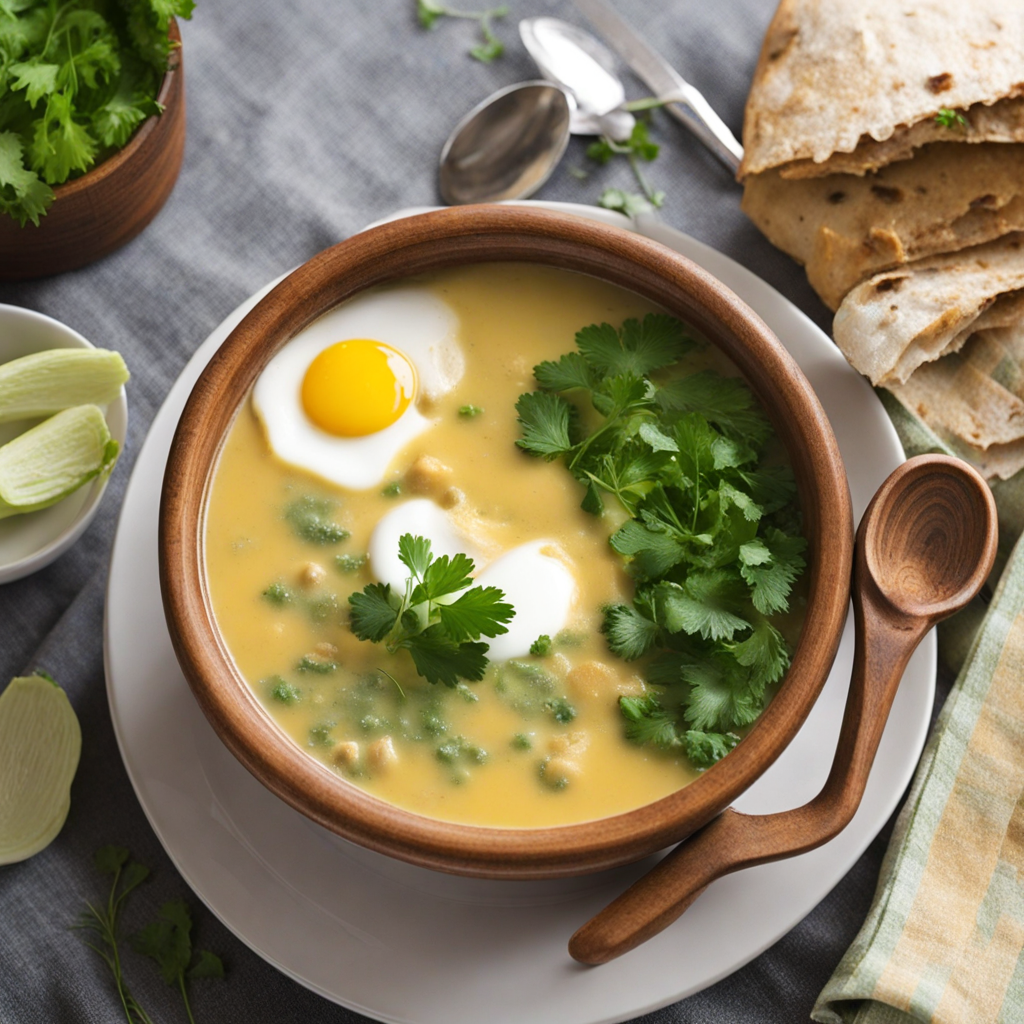Bocadillo
Bocadillo is a beloved Colombian delicacy that showcases the vibrant flavors and textures found in Latin American cuisine. At its core, bocadillo is a sweet treat made primarily from guava paste, which is derived from the guava fruit. This paste is often cooked down to a thick, rich consistency and then molded into rectangular blocks or slices. The natural sweetness of the guava is enhanced by the addition of sugar and sometimes flavored with spices like cinnamon, creating a delightful balance of sweet and slightly tart notes that dance on the palate. Traditionally, bocadillo is enjoyed as a snack or dessert and is often paired with cheese, particularly the fresh, white Colombian cheese known as "queso fresco." This combination of the sweet guava paste and creamy, salty cheese creates a wonderful contrast that elevates the overall tasting experience. The bocadillo can also be served with arequipe, a rich caramel-like spread, amplifying the indulgence of this treat. The texture of bocadillo is firm yet soft enough to melt in your mouth, making each bite a pleasurable experience. In Colombia, bocadillo is not just a food but a cultural symbol, often enjoyed at family gatherings, celebrations, and festivals. The simplicity of its ingredients belies the complexity of its flavor, making it a perfect introduction to Colombian sweets. Whether enjoyed on its own, with cheese, or incorporated into various desserts, bocadillo offers a unique taste that encapsulates the essence of Colombian culinary heritage, inviting anyone who tries it to savor a piece of its rich culture.
How It Became This Dish
The Bocadillo: A Sweet Slice of Colombian Heritage #### Origins of Bocadillo The bocadillo is a traditional Colombian delicacy that embodies the rich cultural tapestry of the country. Its roots can be traced back to the indigenous populations of Colombia, who utilized the abundant resources of their environment to create preserved foods. The term "bocadillo" itself translates to "bite" or "mouthful," which aptly describes this sweet treat that is often enjoyed as a snack or dessert. The primary ingredient in bocadillo is guava, a fruit native to the tropical regions of Central and South America. Guava's sweet and aromatic flesh made it a favored ingredient among indigenous peoples long before the arrival of Spanish colonizers in the 16th century. The indigenous communities would mash the fruit and combine it with sugar or honey, creating a primitive form of what would later evolve into the bocadillo we know today. With the arrival of the Spanish, new culinary techniques and ingredients were introduced, including refined sugar and the practice of preserving fruits. The fusion of indigenous methods with European influences led to the development of various sweet preparations, and bocadillo began to take shape as a sweet confection made primarily from guava paste and sugar. #### Cultural Significance Bocadillo holds a special place in Colombian culture. It is not merely a snack; it is a bridge between generations, evoking memories of childhood and family gatherings. In Colombian households, it is common to see bocadillos served with cheese, creating a harmonious balance between the sweet and savory. This pairing is so beloved that it has become a quintessential Colombian experience, often enjoyed during breakfast or as an afternoon snack. The bocadillo is also a symbol of national pride. It represents the agricultural wealth of Colombia, particularly the fertile regions of the Andes, where guava is abundantly grown. The fruit thrives in Colombia's diverse climates, making it accessible to many farmers. As such, bocadillo production supports local economies and reflects the agricultural traditions of the country. In addition to its domestic significance, bocadillo has gained international recognition. Colombian émigrés have introduced this sweet treat to communities around the world, ensuring that bocadillo remains a part of Colombian identity, no matter where its people may reside. Colombian festivals often feature bocadillo as a highlight, celebrating its heritage and the artistry of its production. #### Development Over Time As bocadillo gained popularity, its production evolved. Traditionally, bocadillo was made at home, a labor-intensive process that involved cooking down guava pulp with sugar until it formed a thick paste. This mixture was then poured into molds to cool and set, after which it was cut into squares or rectangles and wrapped in parchment paper for preservation. In the 20th century, with the rise of industrialization, bocadillo began to be mass-produced. Factories emerged that specialized in creating this beloved treat, allowing it to become more widely available. The artisanal methods of preparation, however, still hold great value, and many Colombians continue to make bocadillo at home, often passing down family recipes from generation to generation. With the advent of globalization, the bocadillo has also seen variations in its preparation and presentation. While the classic guava bocadillo remains the most popular, other fruits such as mango and pineapple have been incorporated, resulting in a range of flavors that appeal to diverse palates. Additionally, modern twists have introduced fillings, such as cheese or nuts, further enhancing the bocadillo experience. The packaging of bocadillo has also evolved significantly. Traditionally wrapped in simple paper, contemporary bocadillo is often found in colorful, branded packaging that showcases its heritage while appealing to modern consumers. This not only aids in marketing but also helps preserve the freshness of the treat. #### Bocadillo Today In today's culinary landscape, bocadillo has transcended its humble beginnings to become a beloved emblem of Colombian culture. It is commonly found in supermarkets, local markets, and artisanal shops across Colombia and abroad. Street vendors often sell bocadillo alongside other traditional foods, providing a convenient and nostalgic snack for both locals and tourists. Furthermore, bocadillo has found its way into contemporary cuisine. Chefs and food enthusiasts are experimenting with bocadillo, incorporating it into desserts, cheese platters, and even gourmet dishes. This blending of tradition and innovation showcases the adaptability of bocadillo, ensuring its relevance in modern gastronomy. The Colombian government has also recognized the cultural importance of bocadillo, promoting it as part of the country's culinary heritage. Initiatives to support local farmers and producers of guava have been implemented, ensuring that the agricultural base for bocadillo remains strong. This commitment to sustainability not only preserves the traditional methods of bocadillo production but also supports the livelihoods of Colombian farmers. #### Conclusion The bocadillo is more than just a sweet treat; it is a testament to Colombia’s rich cultural history and agricultural heritage. From its indigenous roots to its modern-day variations, bocadillo serves as a delicious reminder of the fusion of traditions that define Colombian cuisine. It encapsulates the spirit of community, family, and identity, making it a cherished part of Colombian life. As bocadillo continues to evolve, it remains a beloved snack that resonates with both the past and the present. Whether enjoyed in the bustling streets of Bogotá or shared among family at home, each bite of bocadillo is a celebration of Colombia's vibrant culture and the enduring legacy of its people.
You may like
Discover local flavors from Colombia



